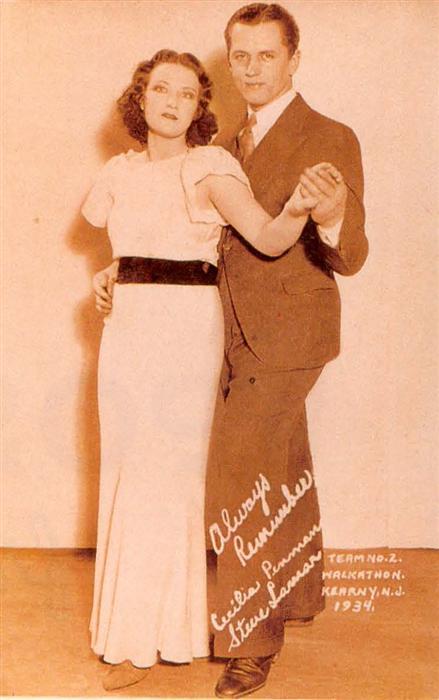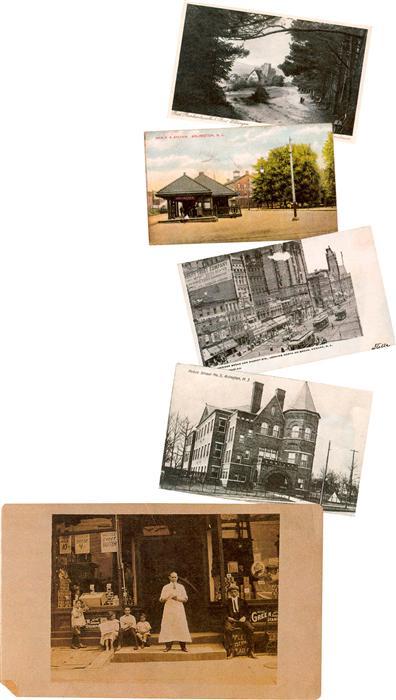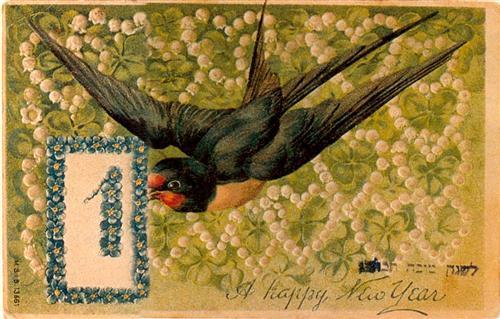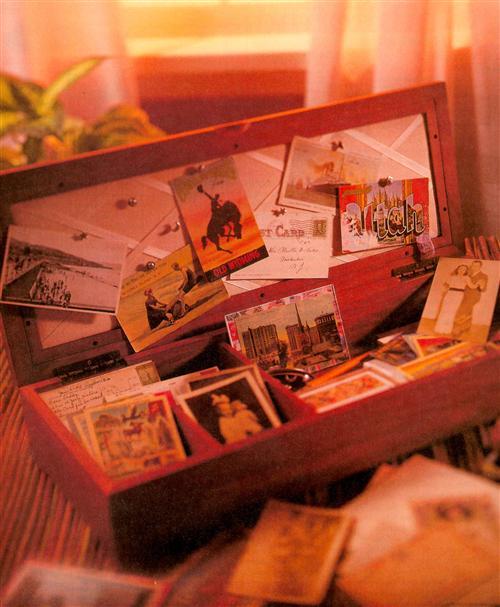
My first thought when I examined a photo postcard of my grandfather that a relative sent me was, “Wow, he had hair!” The photo, taken about 1916, showed my grandfather in front of his Newark, NJ, grocery. But this turned out to be no ordinary postcard, and to be more important for my family history than simply proving my grandfather once had hair.
The penciled message on the card read, “From Mr. Krasner, 65 Boston St., Newark, NJ.” It was addressed to “Miss Belous, 142 E. 112th Street, New York, NY.” The relative who gave it to me said it was a matchmaker’s card to introduce my bachelor grandfather, who was then approaching middle age, to a prospective bride. I didn’t think much of it and figured my grandfather must not have been interested in this particular match.
A couple of years later, however, while researching my grandfather’s family, I discovered that his oldest sister had married a man named Belous. Now, that name sounded familiar — yes, it was the name on the postcard. So, I wondered, was the plan to bring my grandfather and his niece together for the purposes of matrimony? That might explain why the card was still in the family’s possession.
There was a time when people used postcards as we use e-mail messages today — to communicate quickly and inexpensively. Drop a note, place your grocery order, plan your social calendar. You could buy plain cards from the post office (called “governmental cards”), but most people used picture postcards.
If you’ve got old postcards hiding in your attic or cellar or stuffed in a drawer somewhere, they could provide valuable — and colorful — family history clues. You could also supplement your files of birth, marriage and death records by using postcards to show the neighborhood, landmarks, historic buildings and nearby cities.
The evolution of postcards
The first postcard was introduced in October 1869 in Austria by Dr. Emanuel Herrmann. With space on one side for a written message and on the flip side for the address, it offered a quick, easy way to send a message without the bother of an envelope. About a year later, the postcard’s preprinted stamp made it even more convenient — no stamp, no envelope.
“They were cheaper than a letter, plus you could go on a visit, buy a postcard of the place you visited, mail it at the place you visited, and prove to the one you sent it to that you had actually been there,” says postcard expert and author J.L. Mashburn. He cites the period of 1900-1920 as the postcard craze. “Everyone collected them. Many times, people would have a complete set of six or eight and send one each day to the same person until that person had the full set.”
As you look at your family’s old postcards, you can generally divide them into seven historic periods in the development of the postcard:
1. Pioneer Era, 1893-1898 — Picture postcards made their US debut in May 1893 when they were put on sale by vendors and exhibitors at the Columbian Exposition in Chicago. The cards are scarce but are identifiable by their undivided backs, a Grant or Jefferson head stamp, and a title of “Souvenir Card” or “Mail Card.” Most featured multiple views, forming a sort of collage.
2. Private Mailing Card Era, 1898-1901 – The government gave private printers permission to print and sell postcards. The cards were all issued with the inscription, “Private Mailing Card.” Often, the multiple views seen on the “pioneer” cards appeared here as well.
3. Undivided Back Era, 1901-1907 — In December 1901, the government gave permission to use the wording “Post Card” on the backs of privately printed cards. All cards of this era had undivided backs and only the address appeared on the back. That left the front as the sole space for a message.
4. Divided Back Era, 1907-1915 — Now a sender could write both a message and the address of the recipient on the back.
5. White Border Era, 1915-1930 — American publishers tried to fill the void left by previous cards imported from Germany, resulting in cards of much poorer quality. Often, these were reprints of Divided Back cards.
6. Linen Era, 1930-1945 — Though technology improved, these cards were still considered to be cheap. You’ll see a lot of “Roadside America” cards on this paper.
7. Photochrome Era, 1939 to present — These cards often say “chrome” written somewhere near or even in the publisher’s byline. They are colorful and have a slick finish. They typically advertise hotels, motels, motor courts, new automobiles, businesses along the highways such as filling stations, drive-in restaurants, theaters, diners, sports stadiums, skating rinks and so forth.
Getting into the picture
Besides communicating quick notes or vacation greetings, postcards also served as greeting cards for all occasions. These can be gold mines for the genealogist. For example, Jill Clark of Cedar Hill, Texas, has been looking for clues in two scrapbooks full of early 20th century postcards that belonged to her grandmother and great-grandmother. “Some of these cards are Valentine greetings,” Clark says, “and they really did use expressions in the ’20s like ‘You’re the cat’s pajamas!’”
Clark is now using postcards to locate descendants of her great-grandfather’s sister who married and settled in Massachusetts before 1915. “From the postcards she sent my grandmother we know where she and her family went on holiday and other little details about her life at that time,” she says.
Another favorite motif for postcards was transportation, which includes ship advertising, railroad stations and trains. So you might be able to find a card of the ship that brought your ancestors to America. American Line, Anchor Line, Cunard, Hamburg-Amerika, Holland-America, Norddeutscher Lloyd, Red Star, White Star and many other smaller lines issued advertising cards that featured views of their ships accompanied by some size and tonnage facts.
Family historian Gary Kleinedler of Old Bridge, NJ, has been collecting railroad cards for years. “Among the effects my father inherited at my grandfather’s death were some six or eight postcards which my grandfather’s mother had sent him in the 1920s, some 15 to 20 years after he emigrated from what was then the Austro-Hungarian Empire,” he says. “My grandfather had apparently marked ‘This is my hometown’ on the face of one of the postcards, which showed a picture of the railroad station and explicitly named the town.” On a recent trip to his grandfather’s town, Kleinedler traveled to that same station.
Town and city views, another popular postcard subject, show courthouses, schools, streets and post offices. They’re available for both US and European localities, and can be a way of connecting with your ancestors even if they didn’t send the postcards themselves. Says Marcella Lotridge Criner of Owosso, Mich., “A researcher in Germany sent me postcards of the church where my ancestors were married. They’re priceless!”
You may be amazed at how many photo cards were developed for your hometown, even showing individual streets, and you can buy them fairly cheaply. Most are from shortly after the turn of the century, following the 1900 introduction of “Real Photo Cards.”
Similarly, “roadside cards” depicted diners and restaurants, gas stations, hotels and motels, and shops. Perhaps your ancestors frequented a particular eatery or stayed at a certain hotel. If you don’t have a postcard within the family commemorating this, you may be able to find one elsewhere.
Family, and friends
Postcards can help you identify family members as well as close family friends. The Dear Myrtle genealogy column on AOL <www.dearmyrtle.com> told a story of such a connection made when a woman walked into her local Family History Center:
“A young woman in her early 30s came in with only a name on a postcard. The clue was found in the postmark dated 23 June 1911, Philadelphia. She lost both her parents at an early age, due to an auto accident. She has had no contact with relatives since she was five.
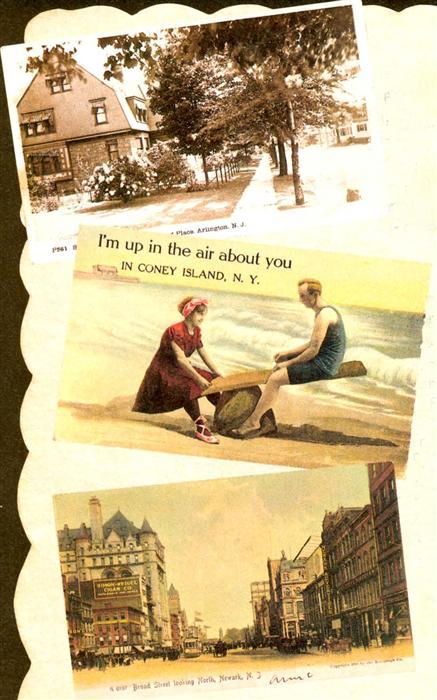
Another researcher, Marcia Meyers of Middletown, Conn., tells how postcards helped her trace her grandfather, Simon Solomon Indianer. She had several letters and postcards he wrote during World War I while in Galicia, a former province of the Austro-Hungarian Empire, to his daughter Sara in the United States. One card, written in October 1915, was a mystery: “Grandfather had written a postcard to Vienna to an Isak Leib Roth. The postcard asked Roth to ask his daughter Anna why Sara wasn’t writing from the US. I guess the daughter passed the postcard on to Sara. Who was Isak Leib Roth and how did Grandfather know him?”
Meyers recently had lunch with another genealogist whose grandfather was from the same town, and gave her a copy of the booklet she’d assembled of her grandfather’s correspondence. “As I was driving home it occurred to me that she had mentioned her grandfather’s name was Roth. I e-mailed her as soon as I got home and told her to look on the page where the postcard from Roth was — perhaps it was a relative,” she recalls. “Immediately she e-mailed me that Isak Leib Roth was her grandfather whom my grandfather had written! Her grandfather had left his home and was staying with his daughter in Vienna. It was obvious that our grandfathers were good friends and my Aunt Sara and her Aunt Anna also were good friends.”
Finding old postcards
The first place to look for postcards about your past is right within your family, in attics, cellars, scrapbooks — wherever correspondence might be stored. Some postcards were hung on walls or placed on mantels alongside picture calendars, so they might also be stored separately from letters and diaries.
Outside the family, you can find cards — of your ancestral hometown, for instance — at antique dealers, postcard shows, stamp shows and even garage sales. You can also find them through Web sites.
Noted genealogist Miriam Weiner, author of Jewish Roots in Poland, tells of walking into a used bookstore in Lublin, Poland — and finding that the owner was a big collector of antique postcards. “There are major postcard dealers as well as private collectors throughout the world. It is still a relatively small network and often one will refer you to another,” she says. “Postcards are a wonderful way to recapture the past, particularly when you have two cards alongside each other — one view taken 75 years ago and a current view of the same building or street.” Weiner has used cards from her extensive collection to illustrate her books.
I bought one particular New Year’s postcard, postmarked 1906, from an antique store in Sullivan County, NY, while on a vacation. The card, written in German by Robert Jacobson in America to his mother in Courland, Russia, somehow made a miraculous journey back across the Atlantic to America. I thought it might be a good idea to see if any Jacobsons would be interested in the card — perhaps there was a descendant. I posted a query to the JewishGen Web site <www.jewishgen.org> and got a response from a rabbi in Sweden. The Courland Special Interest Group is also interested in the card. Little did I know that Jacobson was one of the most common Jewish surnames in Courland.
In 1999, I went to the Garden State Post Card show to find cards for my hometown of Kearny, NJ. I was working on a book for Arcadia Publishing’s Images of America series about the town. Though the space this show occupied was small — it was held in a Police Athletic League office — the collections amazed me. I focused on Kearny cards and bought about 50. Three of these cards, which the dealer had obviously been trying to off-load for years, featured dance marathon couples of the 1930s. It turned out that one of the trustees of the Kearny Museum with whom I was working on the book was very familiar with the marathons — his uncle ran the place. So along with the card I got a bit of history.
Find it on the Web
• Internet Postcards and Collectibles Club
<www.web-pac.com/mall/club/default. htm>
• Jim Mehrer’s Postal History
• Metropolitan Postcard Collectors Club
• Postcards International
• Web-Pac Antiques, Postcards, Autographs, Ephemera and Collectibles Mall
On the newsstand
• Barr’s Post Card News <www.tias.com/mags/barr> (800) 397-0145
• Picture Postcard Monthly <www.postcard.co.uk> +44(115) 937 4079
On the bookshelf
• Collector’s Guide to Post Cards by Jane Wood (LW Publishing & Book Sales)
• The Encyclopedia of Antique Postcards by Susan Brown Nicholson (Krause Publications, out of print)
• Found Lives: A Collection of Found Photographs by James Nocito (Cibbs Smith)
• Postcard History Series (Arcadia Publishing) Histories of US towns and states in vintage postcards. See <www.arcadiaimages.com/phscatalog.html> for titles.
• The Postcard Price Guide: A Comprehensive Reference by J.L. Mashburn (Colonial House)
From the February 2001 issue of Family Tree Magazine

